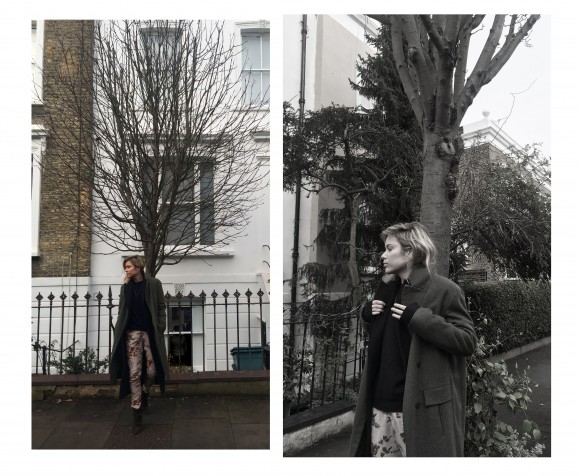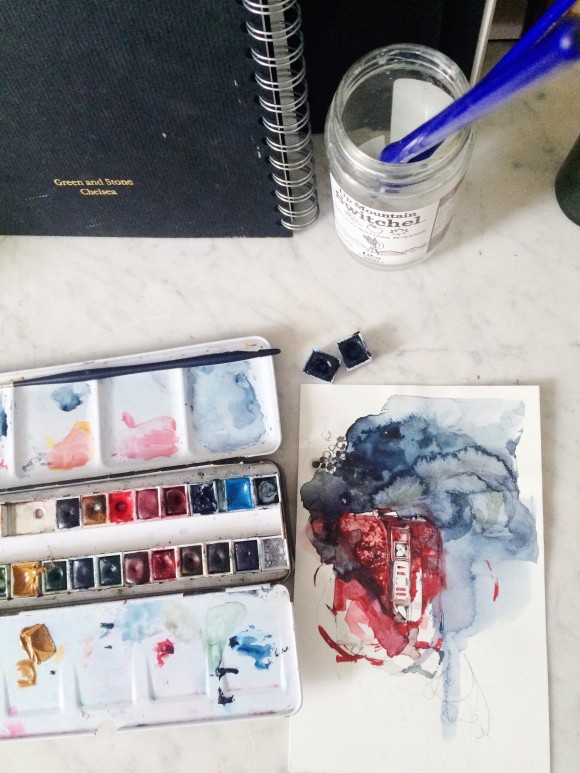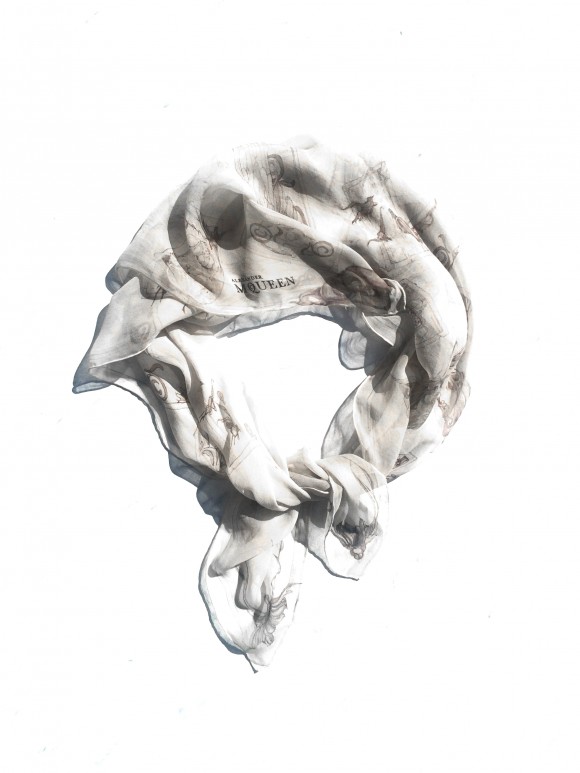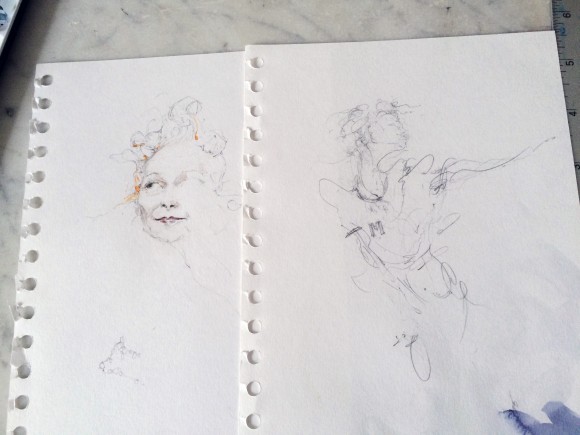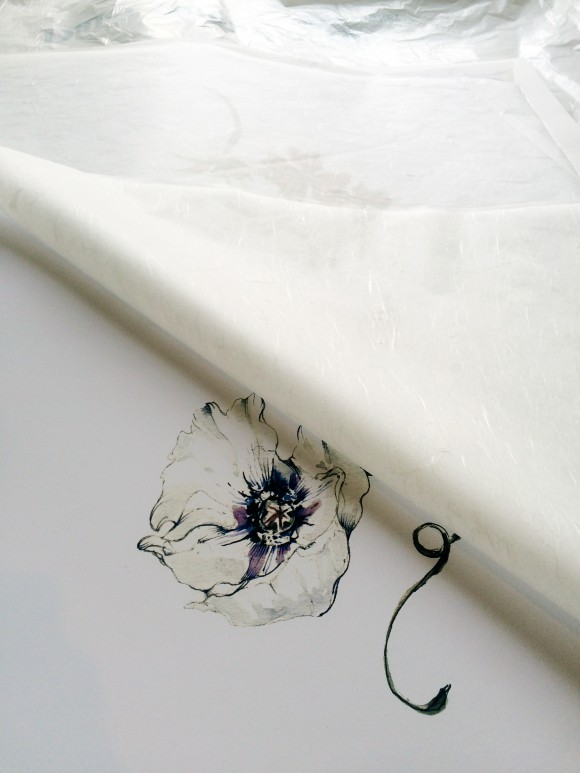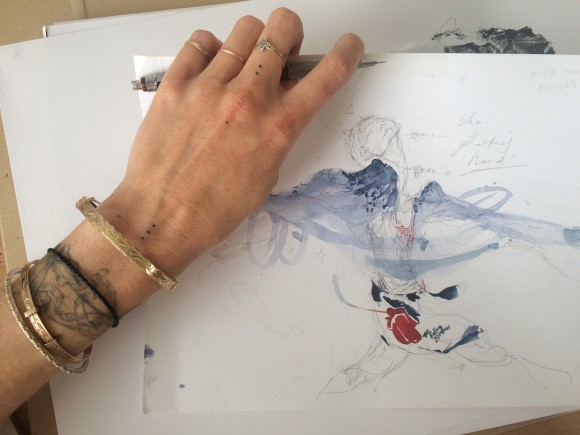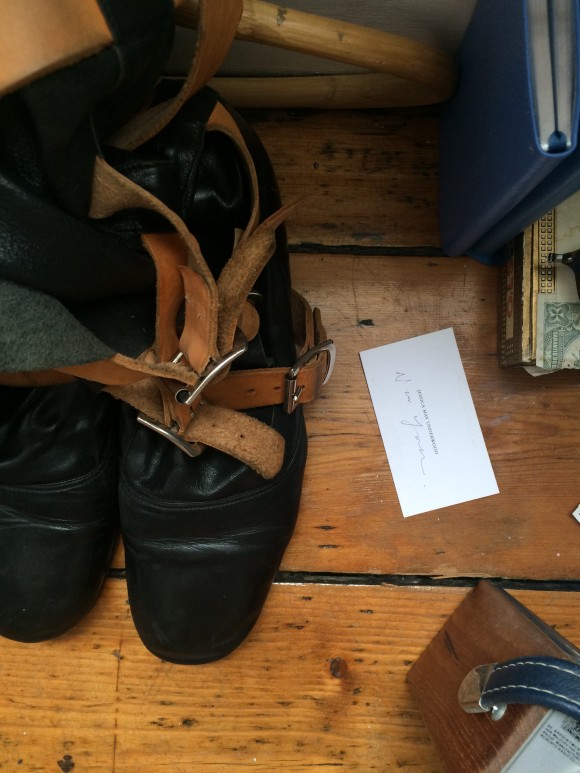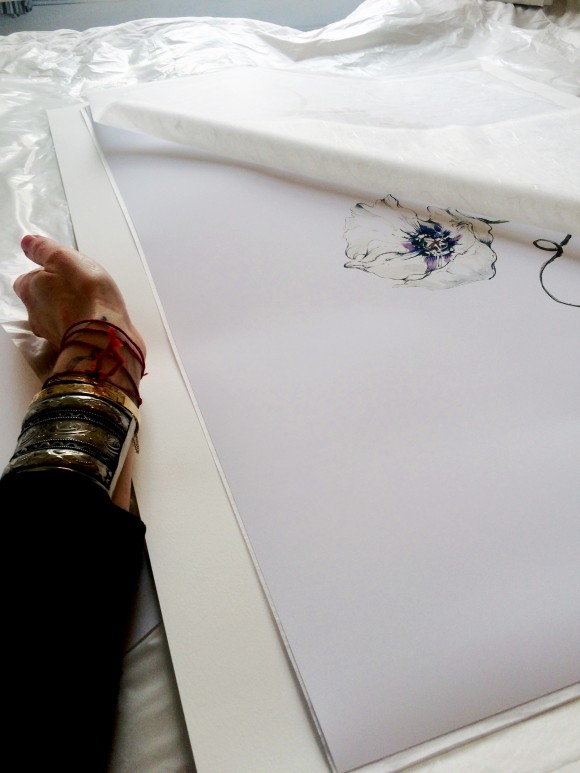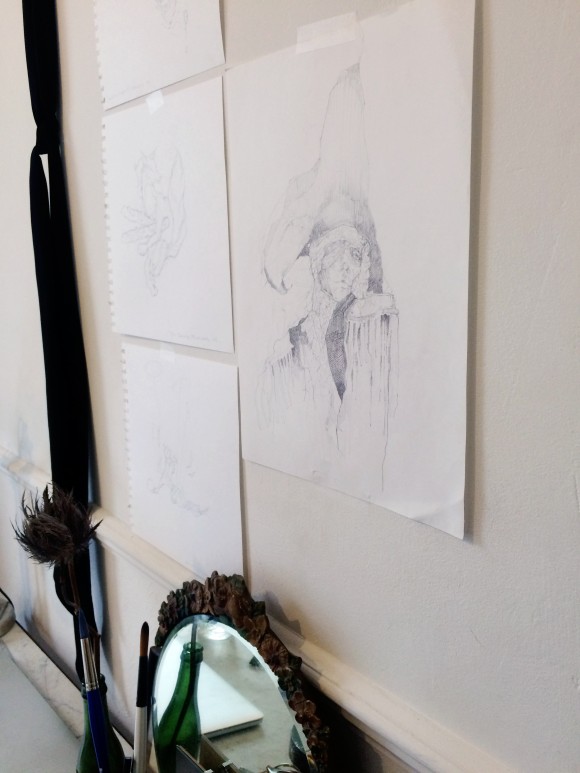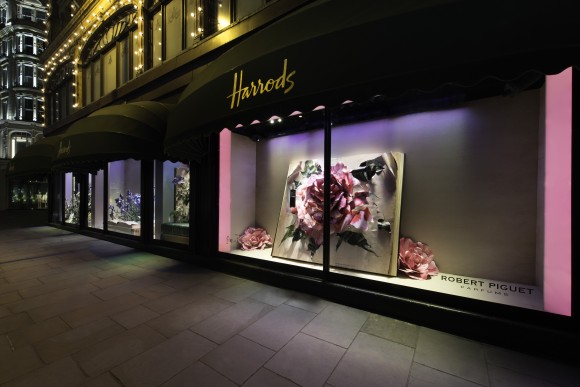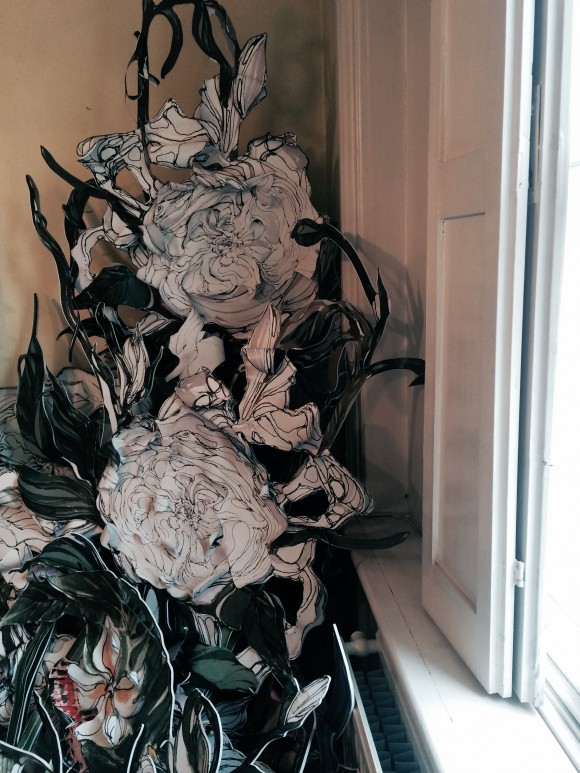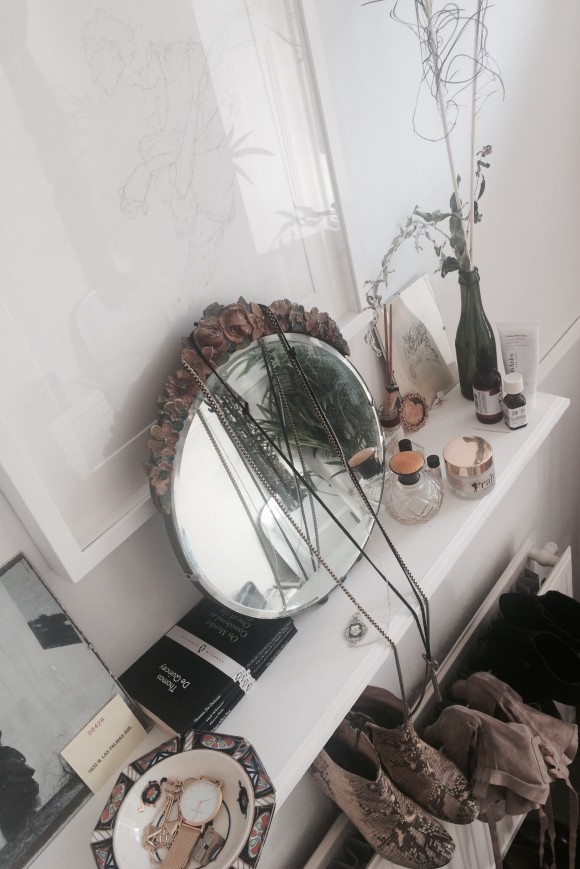At Work With Jessica May Underwood
History, art and fashion combine in Jessica May Underwood’s stunning work…
Vines twist and curl about her arms, flowers bursting with petals of crimson and midnight spray across the page. The illustrative work of Jessica May Underwood is instantly recognizable, all ethereal lines and twists of ink, and this month the stunning work she’s become known for can be seen between the pages of our February catalog. Appropriately titled “The Artist Issue” and boasting the works of multiple creators across its pages, including Underwood’s own brand of self-expression, the February catalog celebrates art in all its forms.
Enamored with her use of line and form, I couldn’t help but be curious about the creative soul who lies behind the pen and ink and watercolor that flows so freely about our models. I caught up with Jessica recently to learn a bit more, scroll on to take a peek into her studio life and to learn what inspires this incredible artist.
Hello Jessica! Thank you so much for speaking with me!
Of course!
Where did you grow up? Do you think the environment in which you were raised influenced your eventual decision to become an artist?
I grew up in the south of England in the country. Most of my childhood was spent sailing and on boats. It provided the perfect education on nature and the elements, a lot of stillness, culture, reading. It furnished me with good roots for my professional life.
Did you always imagine yourself as an artist? What led you to explore that side of yourself and eventually make it your career?
No, I didn’t consciously decide to become an artist — and I still don’t think of myself as one because I have interests in so many ofter things.
I always studied art and literature. I draw because it is what I love — it’s the only thing that takes me to my edges. I have an artist’s mind with regards to creation and curation, but a very methodical outward nature.
You work in a variety of mediums – lithograph, watercolor, pencil – but your style really seems to be grounded in fashion illustration. Has fashion and fashion illustration always been an interest of yours?
Fashion has always been a huge part of my life and good design is very important to me. I left Saint Martins University in London and started work immediately at Alexander McQueen, drawing in-house and working with some of the greatest people I could have imagined. This led to opportunities and minds I respected and learned from and I think this sticks with you.
I was always educated in fashion history and was very passionate about what I liked; I had a very particular style. I love military history and uniform, attention to detail in embellishment, construction. I worked in a vintage print archive for two years and learned a lot. The collision and convergence of historical understanding and clothing is how I digest fashion, so this nature comes through in all of my work — especially my personal pieces. But I have always pioneered a very broad client base — not limited to fashion.
Pictured above: An Alexander McQueen scarf featuring a pattern of illustrations by the artist
You draw and paint such beautiful natural forms – flowers, leaves, vines, honeybees and wasps populate many of your pieces. Even in your more figurative work there appears to be a botanical element – is that intentional?
I think it is more natural than intentional. I paint what I see and the fluidity of figurative work is derived from strength of natural form. They go hand in hand.
A stylistic language. Nature is the tenuous link between human and art form.
How does your work for brands differ from your more personal pieces? Is the approach different?
It is interesting. Because I believe an artist’s best clients are just that because they have hired you correctly. I meet endless art directors, and it is the conversation and understanding between us and the greater artistic establishment that makes for great work. I like to maintain a strong continuity of practice on a commercial and professional standard — so this definitely makes for subtle restrictive parameters in the work.
My personal work is simple pencil drawing. I am most alive when I am drawing for no one but myself, because I love something that I have seen or believe warrants recording. These pieces are ambiguous, usually figurative, and possess a kind of personal reportage of what I value. They have no intention of placement so they can be as untethered in their looks as I want them to be. I suppose the difference would be in that, of my commissions, I would ask someone in my studio for an objective eye, if it had visual clarity — because it is for a purpose. And for my own work, I would never even consider it. Because that isn’t the point. Illustration is a very finite and universal method of communication.
The work you created for our February Artist Issue flows so beautifully with the model – what came first? Did you have the photographs for reference or was this a happy accident?
Thank you. I worked with Free People’s designers in post-production to hand draw each botanical piece into each composition. The creation of the elements was directed by the season, and the drawings were rendered with a sensitivity to each frame as an individual artwork.
When you take on a project such as the February catalog, what does your process look like from concept to creation?
Actually very methodical on paper, but I create, I would say, 30% from reference and 70% imagination. I am quite regimented and very neat with the way that I conduct my work.
This past spring one of your largest projects came to fruition: the 2015 Harrods spring window displays, which featured 35 of your paintings fabricated into 3D sculpture. Could you describe the experience of seeing your drawings come to life as installations?
Yes, it was the largest campaign that Harrods had ever undertaken, and from the outset I couldn’t have anticipated how important it would be in my career. To see my hand drawings as giant sculptures and on every wall and interior of this iconic department store was really quite amazing. It was a major spectacle in the city for a month and was taken to the HRH Royal Chelsea flower show. It was the first time I have stopped for five minutes and congratulated myself.
You’ve spent time in LA and currently split your time between studios in London and New York. Does your work shift or evolve depending on location?
Absolutely. I feel very different currents from each of the cities and I like to absorb as much as possible. It is my job. New York drives me mad with creation. I believe one of the roots of why I work stems from a drive to get a stylistic contextual image onto paper, a communication of a time. I find that very fascinating. And people listen.
What inspires you?
Intelligence.
Who inspires you?
Great, talented and bold people, contemporary and historical.
What’s the best advice you’ve ever been given?
Move — and the way will open.
And the worst?
“Leave your car with me — I will fix it for you…”
What’s next for you? Any personal or professional goals or ventures you’re hoping to accomplish in the next year?
I am working with the Victoria and Albert Museum in London this year, and exhibiting for the first time in America. I am scheduled to lecture on the history of illustration, and I am finishing work on my fourth book collaboration. I am also working with a new roster of editorial clients in New York and London.
To be ‘free’ means…
Exultation.
Thank you Jessica!
See the piece Jessica created exclusively for Free People here!
Be sure to visit Jessica’s website and follow her on Instagram.

